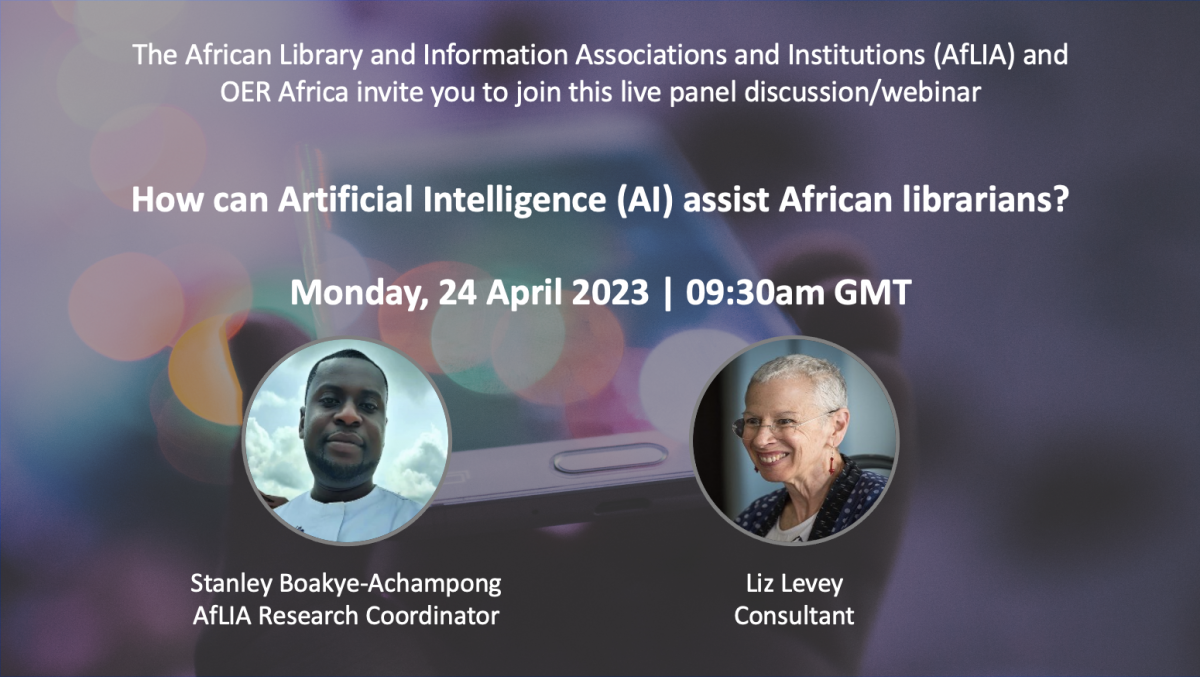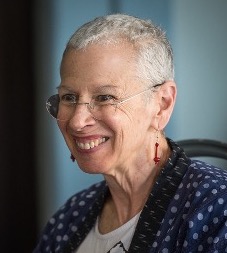
Access the recording
AfLIA has recently signed a memorandum of understanding (MoU) with OER Africa of Saide to build a sturdy CPD framework that will project African librarians into a new era as change agents and leaders in driving open education, open access and open licensing as critical components for driving quality education and creativity in the continent.
In conjunction with OER Africa, AfLIA is hosting a panel discussion on the role of Artificial Intelligence and African libraries. This webinar is the second in a series of activities that will help build understanding, adaptable knowledge and skills. The first 100 participants can register and join the panel discussion on Zoom. Additional participants will be able to follow it live on YouTube.
Date: Monday, 24th April, 2023
Time: 9.30am UTC | 10.30am WAT | 11.30am CAT | 12.30pm EAT
Registration
This is a free webinar. After completing the registration form, you will receive notification via email with details of how to join the webinar.
Carefully read the section on Technical Requirements to help you prepare adequately for this webinar.
Resource persons

Just as the introduction of personal computers revolutionized access to computing power for everyone, AI technology such as ChatGPT, has made advanced language models widely accessible to a broader audience. The conversation about the implications of such AI has been re-ignited since the launch of ChatGPT. Indeed, AI powered technologies, when embraced, can play a vital role by improving access to information and refining the quality of services provided to patrons. As with every other technology, AI may have some undesirable implications on library education, research and service delivery. The global conversation is an interesting mix of divergent views on AI but not so much has been discussed in the area of its impact on Librarianship, especially within the African context. Stanley will briefly highlight general issues of awareness, perception, adoption and the implications of AI on African library education, research and service delivery.
Stanley Boakye-Achampong is the AfLIA Research Coordinator

English is the dominant language in most OER repositories. The same is true for open access journal literature; many more scientific journals are published in English rather than in other languages. The two noteworthy exceptions are African Storybook (ASb) and StoryWeaver that focus on African languages and Southern Asian respectively.
It has been demonstrated that if children are to be successful in learning to read with comprehension, they should start out in their mother tongue. Adults, too, would benefit by reading content in their own languages. This is particularly true of scientific terms and concepts. The use of language, therefore, has great significance when considering how to make education truly inclusive and equitable—one of the goals of the UNESCO OER Recommendation.
AI can assist authors and readers to read research in their own languages. Liz will discuss efforts to make science inclusive and equitable in African languages, with a focus on research literature and the role of AI in translation.
Liz Levey is an independent consultant and expert in the field of openness and languages
Drs. Nkem Osuigwe and Tony Lelliott will facilitate the discussion.
Technical Requirements
Upon registration, reminders will be sent to all registrants periodically. This webinar will be hosted on the Zoom Conferencing Platform. Participants, who do not have Zoom on their mobile devices and or computers, need to download, install and create an account on Zoom ahead of time. Webinar attendees are encouraged to join early, preferably 15 minutes before the start of the webinar, as one may need time launch the application. The speaker will use a webcam to connect with attendees. Audio and video for the session will be streamed over computer speakers. Attendees are therefore encouraged to connect with a headset or earpiece for maximum utility. Please note that this webinar does not involve a certificate of participation.
The webinar will also be live-streamed on YouTube.
